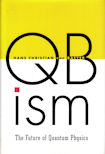The final day and a half of the Erice Unconventional Computing workshop were also good, but without photos.
The Tuesday was also scheduled 9am to 7:10pm, but due to some unfortunate cancellations, we had “free” time from noon until 5pm. A small group of us took the opportunity (moving leisurely from the gelato shop, to a Pizza restaurant, to the conference refreshment room) to sketch out a 20 year research vision, and a shorter term research plan, based on our previous work plus what we had learned at the workhop itself. Next we have to consolidate the ideas, and write some research proposals (oh, and do the research if we win the funding, of course).
Tuesday evening was the workshop dinner, in the posher of the various restaurants we have been exploring, and not the standard set menu either.
Wednesday was only a half day, and mostly a discussion session of what we had learned, and what to do next. A slot for andother workshop in 2024 has already been booked, so that’s something to look forward to!
The drive back to Palermo airport was in the light, so I could see some of the scenery I missed on arrival. Since my flight wasn’t scheduled until 9:45pm, I had the oipportunity to experience the airport cuisine.
The flight was delayed. Surprise. Not as bad as the over 3 hour delay on the way out, but "only" an hour and a half. This meant I was passing through Stansted at 1:30am, rather than just before midnight as planned. The drive home was also longer than planned, since the motorway was closed for roadworks, and I had to use the back roads. So I got home at 3am, rather than the 1am I was hoping for. Still, at least I didn’t have to get up early this morning to go to a workshop! Hopefully I’ll be less zombie-like and sleep deprived tomorrow.
All in all, a great workshop, with excellent talks and ideas and conversations, plus gorgeous weather, and delicious gelato. If only one could be at these places without having to travel.

























